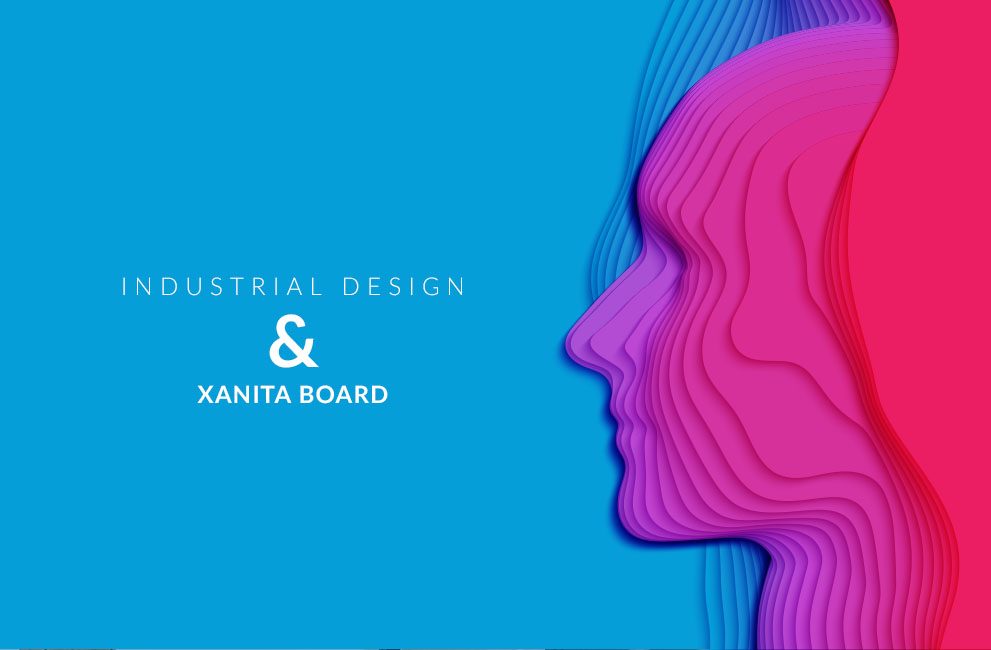
Industrial design and Xanita board

Industrial design is the process of creating and developing products that are both functional and aesthetically pleasing. This process involves combining engineering principles with creative thinking to design products that are both practical and visually appealing.
One aspect of industrial design is point-of-sale retail design. This involves designing a display that not only protects the product, but also enhances the overall customer experience. Historically point-of-sale retail design often involved using materials, such as metal, MDF or plastics, to create a finished display. However, with the increased focus on sustainability, designers are now turning to paper-based materials such as Xanita board as a more eco-friendly alternative.
When it comes to paper-based materials, there are a number of sustainable options available. For example, paper made from recycled fibers can help reduce the environmental impact of point-of-sale display. Additionally, paper-based materials such as kraft paper and corrugated cardboard can be used to create unique and visually appealing designs.


Exhibition stand design is another area where industrial design principles come into play. Exhibition stands are used to showcase products at trade shows and other events, and they must be designed to attract attention and effectively communicate the brand’s message. The engineering principles behind exhibition stand design include creating structures that are both sturdy and lightweight, as well as incorporating lighting and other visual elements to make the stand stand out from the crowd.
Sustainable exhibition stand design often involves using materials that can be easily recycled or reused after the event is over. This might include using modular designs that can be disassembled and reassembled at different events, or incorporating materials such as Xanita board into the structure.
Shopfitting design is another aspect of industrial design. Shopfitting involves designing the layout and fixtures of a retail space to create a visually appealing and functional shopping environment. The engineering principles behind shopfitting design include optimizing the use of space and designing fixtures that are both sturdy and aesthetically pleasing.
Sustainable shopfitting design involves using materials that are both eco-friendly and durable. Xanita board is able to fulfill this requirement for certain applications, most notably when it comes to decorative ceiling bulkheads (baffles).

Wide format equipment
Wide format printing and CNC cutting are important production processes to consider when designing for Xanita board, particularly for creating large-scale designs such as exhibition stands or shop fittings. Designers must factor in the capabilities and limitations of these processes when creating their designs.
What is wide format printing and CNC cutting?
Wide format printing is a printing process that can produce large-scale designs on a variety of materials, including paper, vinyl, and fabric. In industrial design, wide format printing is often used to create banners, signage, and large-scale graphics for exhibition stands and shopfitting designs. When designing for wide format printing, designers must consider the resolution of the final output and the color accuracy of the printer. They must also ensure that the design is scalable and that any text or graphics are legible at the intended viewing distance.


CNC cutting, on the other hand, is a process that uses computer-controlled machines to cut and shape materials such as Xanita board, plastic, foam and metal. CNC cutting is used in industrial design for creating intricate shapes and designs, such as custom fixtures for shopfitting designs or 3D signage for exhibition stands. When designing for CNC cutting, designers must consider the cutting capabilities of the machine, various CNC tools and blades, the thickness and type of material that can be cut, and the accuracy of the cuts that can be made. They must also design with the production process in mind, creating designs that can be easily cut and assembled.
When incorporating wide format printing and CNC cutting into sustainable industrial design, designers must also consider the environmental impact of these processes. For example, using eco-friendly inks and recycled materials for wide format printing, or choosing sustainable materials that can be easily recycled or reused in CNC cutting. By considering the capabilities and limitations of these processes and designing with sustainability in mind, industrial designers can create high-quality products that are both functional and environmentally friendly.
In conclusion, industrial design principles are essential for creating high-quality point-of-sale displays, exhibition stands, and shopfitting designs. By incorporating sustainable materials, such as paper-based materials, into these designs, designers can help reduce the environmental impact of their work while still creating products that are both functional and visually appealing.

